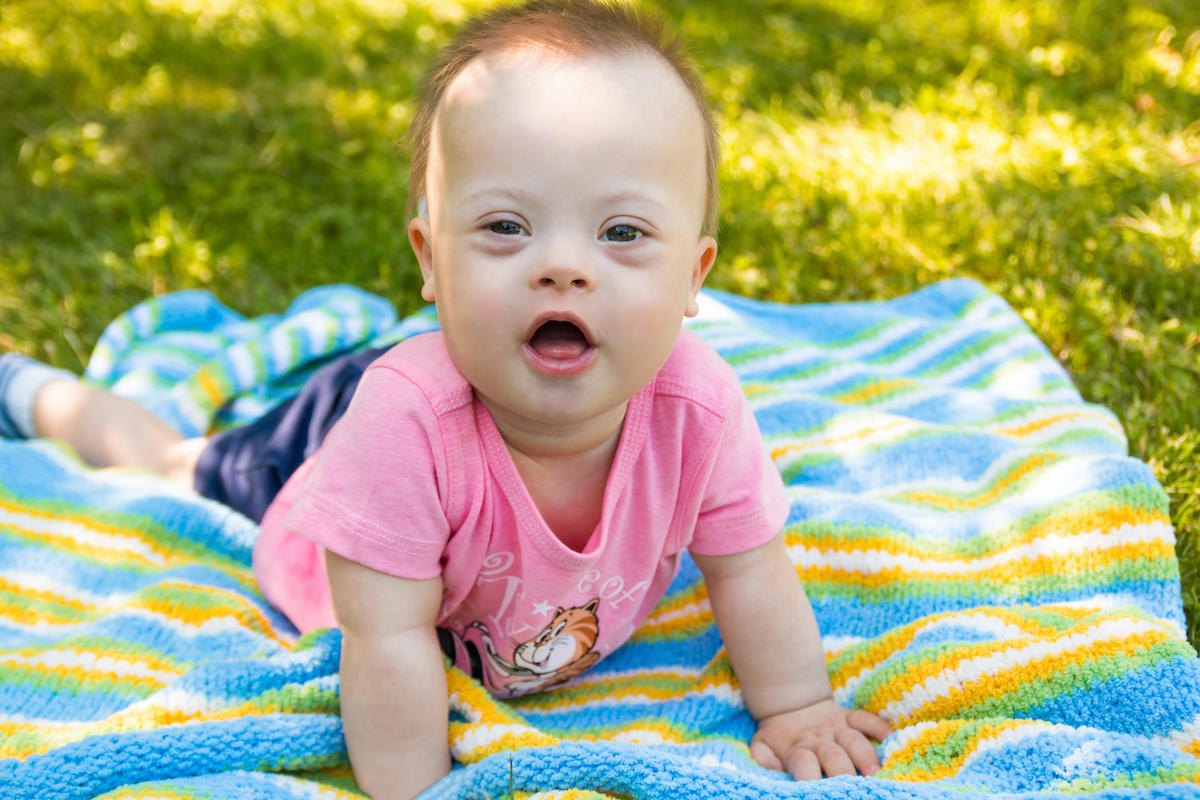The intersection of race, disability, and representation in contemporary society invites a rich tapestry of discussion. To engage with these interwoven themes, one might pose a playful question: What happens when the image of beauty intersects with societal norms in unexpected ways? A compelling example emerges when we consider the figure of a Black baby with Down syndrome. Through the lens of cultural relativism, we glean insights into how beauty and value are constructed differently across societies, and how these constructions challenge mainstream narratives.
The notion of beauty is heavily influenced by cultural frameworks. In many Western contexts, for instance, conventional standards prioritize attributes that are often unattainable for individuals with disabilities, further complicating the societal acceptance of diverse forms of beauty. Yet, the image of a Black baby with Down syndrome compels us to question these hegemonic ideals. It serves as a poignant reminder of the diversity of the human experience and the multifaceted nature of beauty, one that transcends simplistic categorizations. As we delve into this discourse, let us examine the dimensions of representation, the cultural implications, and the inherent challenges posed by societal standards.
Representation within media and society has profound implications for identity formation. The portrayal of individuals with disabilities, particularly those from marginalized racial groups, has historically been fraught with stereotypes and misrepresentation. This dynamic can perpetuate harmful narratives that diminish the lived experiences and individuality of those portrayed. When we consider the beauty of a Black baby with Down syndrome, we encounter an opportunity to challenge these narratives. We might ask ourselves: how does this representation redefine our understanding of beauty within various cultural contexts?
At the heart of this exploration lies cultural relativism, a concept that advocates for understanding beliefs and practices within their specific cultural contexts. By examining the representation of a Black baby with Down syndrome through this lens, we find that beauty is not a monolithic standard but rather a societal construct that varies drastically across different cultures. In some African communities, for instance, the attributes associated with health and vitality may extend beyond mere physical appearance, embodying a holistic view that encompasses emotional well-being and communal ties. This holistic approach fosters an appreciation for the inherent beauty within all individuals, regardless of their physical or cognitive attributes.
Furthermore, the representation of individuals with disabilities challenges the hegemony of ableism that often pervades cultural narratives. In numerous societies, especially those influenced by Eurocentric standards, the discourse surrounding disabilities can be overwhelmingly negative. The portrayal of Down syndrome predominantly leans towards depictions of limitation rather than celebrating the unique contributions and beauty of individuals with this condition. A Black baby with Down syndrome disrupts this narrative, embodying a triumph over societal prejudices. Here, we must reconsider how we articulate and disseminate the narratives of those living with disabilities; the challenge lies in elevating these voices to a platform where they can redefine societal perceptions of beauty.
Moreover, representation is not merely about visibility; it is about agency. The agency of individuals with Down syndrome to exist in public spaces, to engage in social interactions, and to receive love and recognition as beautiful beings must be foregrounded in discussions of representation. Consider the symbolism of a Black baby with Down syndrome: it encapsulates resilience, hope, and the dismantling of barriers. This representation invites us to recognize beauty not as an exclusive privilege but as a universal right, one that is accessible to all, regardless of their racial or cognitive identity.
However, the challenge remains. As we strive to create a more inclusive society, how do we combat the entrenched biases that dictate beauty standards? This question compels us to rethink the platforms through which these representations are disseminated. It is imperative that media, art, and literature embrace diversity and actively seek to uplift marginalized voices. By promoting narratives that feature individuals with disabilities, particularly those from diverse racial backgrounds, we disrupt the dominant discourses that often marginalize them. This disruption lays the groundwork for a future wherein beauty is understood to be richly diverse and inclusive.
In conclusion, the beauty of a Black baby with Down syndrome within the framework of cultural relativism provokes critical reflection on how we view representation in society. It beckons us to reconsider entrenched notions of beauty shaped by cultural ideologies and challenges us to embrace complexity. By doing so, we foster a more expansive notion of beauty—one that is not limited to aesthetic ideals but rather reflects the intricate narratives and lived experiences of all individuals. To appreciate the beauty of a Black baby with Down syndrome is to recognize the potential for inclusivity, compassion, and understanding within our cultural narratives. This in itself is a transformative journey—one that holds the promise of fostering a society that celebrates diversity in all its forms.
